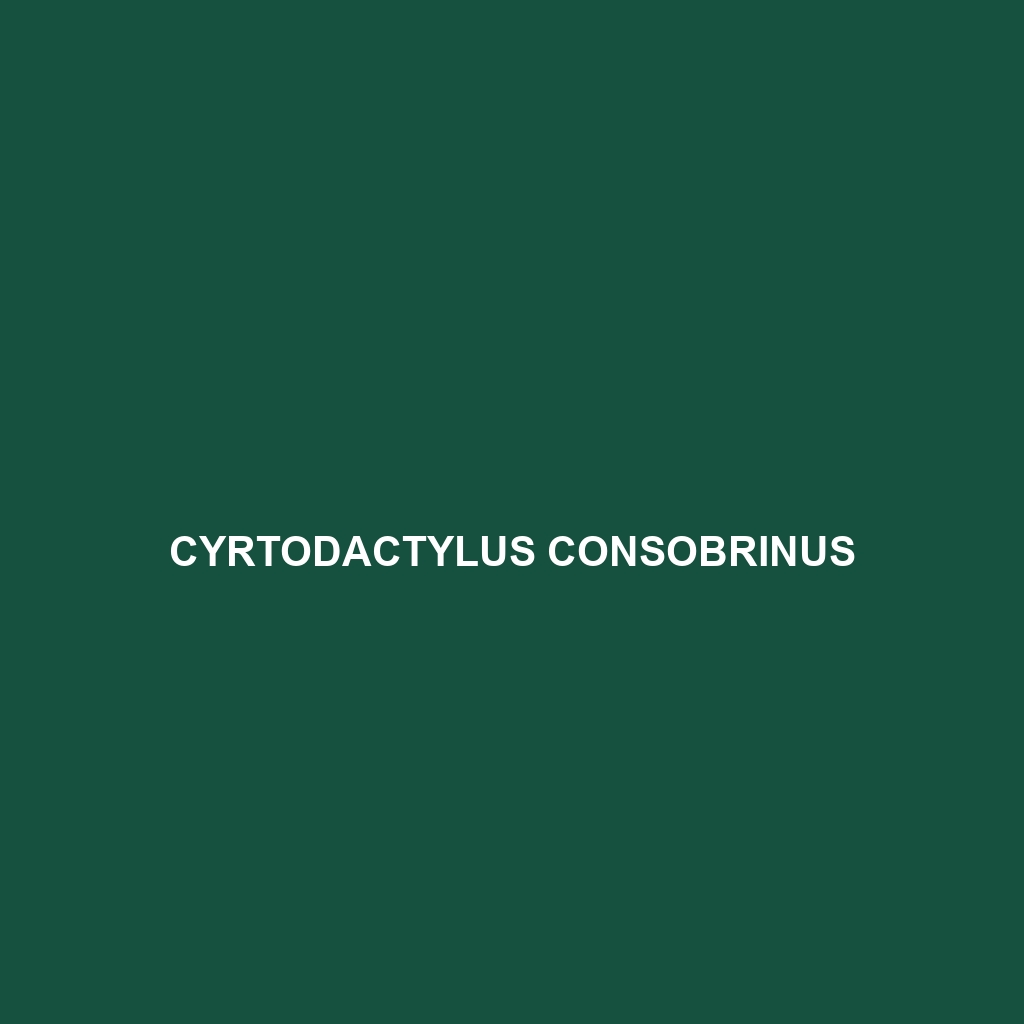<strong>Cyrtodactylus khammouanensis</strong> is a vulnerable gecko species native to the limestone karst regions of central Laos, characterized by its light brown coloration with darker mottling, moderate body size of 8 to 15 cm, and nocturnal behavior. This agile predator plays a vital role in insect control and contributes to the ecosystem's balance while facing threats from habitat destruction.
Tag: tropical forests
Cyrtodactylus huynhi
Cyrtodactylus huynhi, a striking gecko native to Vietnam's tropical forests, known for its nocturnal behavior, camouflage, and vital role in maintaining ecological balance as both predator and prey. This species, reaching up to 10 cm in length, plays a crucial part in the health of its habitat by controlling insect populations and contributing to the food web dynamics.
Cyrtodactylus hutan
Cyrtodactylus hutan is a medium-sized, nocturnal gecko native to the tropical forests of Southeast Asia, characterized by its slender frame, rounded toe pads, and subtle camouflage patterns. This insectivorous species is vital for maintaining ecological balance, but it faces threats from habitat loss and is currently classified as vulnerable.
Cyrtodactylus hekouensis
Cyrtodactylus hekouensis, a vulnerable gecko native to the tropical forests of southern China, showcases impressive climbing abilities and distinct coloration, thriving in karst limestone formations. Primarily nocturnal, these agile predators play a crucial role in controlling insect populations within their ecosystem.
Cyrtodactylus evanquahi
The Cyrtodactylus evanquahi, known for its medium size (20-25 cm) and distinctive brown and gray patterns, thrives in the humid tropical forests of Malaysia and Indonesia. This nocturnal insectivorous gecko plays a crucial role in its ecosystem, aiding in insect population control while facing vulnerabilities due to habitat loss.</p>
Cyrtodactylus deveti
The Cyrtodactylus deveti, a vulnerable gecko species from the tropical forests of Southeast Asia, measures 15 to 20 cm and features unique coloration for camouflage. Nocturnal and highly agile, it plays a vital role in controlling insect populations while showcasing fascinating adaptations, such as slight color changes in response to environmental stimuli.</p>
Cyrtodactylus derongo
The Cyrtodactylus derongo, or Derongo Bent-toed Gecko, is a nocturnal, insectivorous reptile found in the humid forests of Southeast Asia, characterized by its striking brown or gray coloration, climbing abilities, and unique reproductive strategy. Currently listed as 'Vulnerable,' it plays a crucial role in maintaining ecosystem balance through its predation on insects.
Cyrtodactylus consobrinoides
Cyrtodactylus consobrinoides, a medium-sized gecko native to Southeast Asia, thrives in humid limestone karsts and tropical forests. This nocturnal insectivore features distinctive coloration for camouflage, agile climbing abilities, and is classified as vulnerable due to habitat loss.
Cyrtodactylus chaunghanakwaensis
Discover the Cyrtodactylus chaunghanakwaensis, a vulnerable gecko species found in the tropical forests of Southeast Asia, known for its distinctive patterned scales, nocturnal hunting behavior, and vital role in controlling insect populations. Thriving in humid environments, this slender reptile measures 10 to 15 cm and plays a crucial role in maintaining ecological balance.
Cyrtodactylus calamei
Cyrtodactylus calamei, commonly known as the Calame's Bent-Toed Gecko, is a nocturnal insectivore found in the limestone karsts of southeastern Asia, exhibiting remarkable climbing abilities and unique coloration for camouflage. Classified as "Vulnerable," this slender gecko plays a vital role in its ecosystem by controlling insect populations and serving as prey for larger animals.









